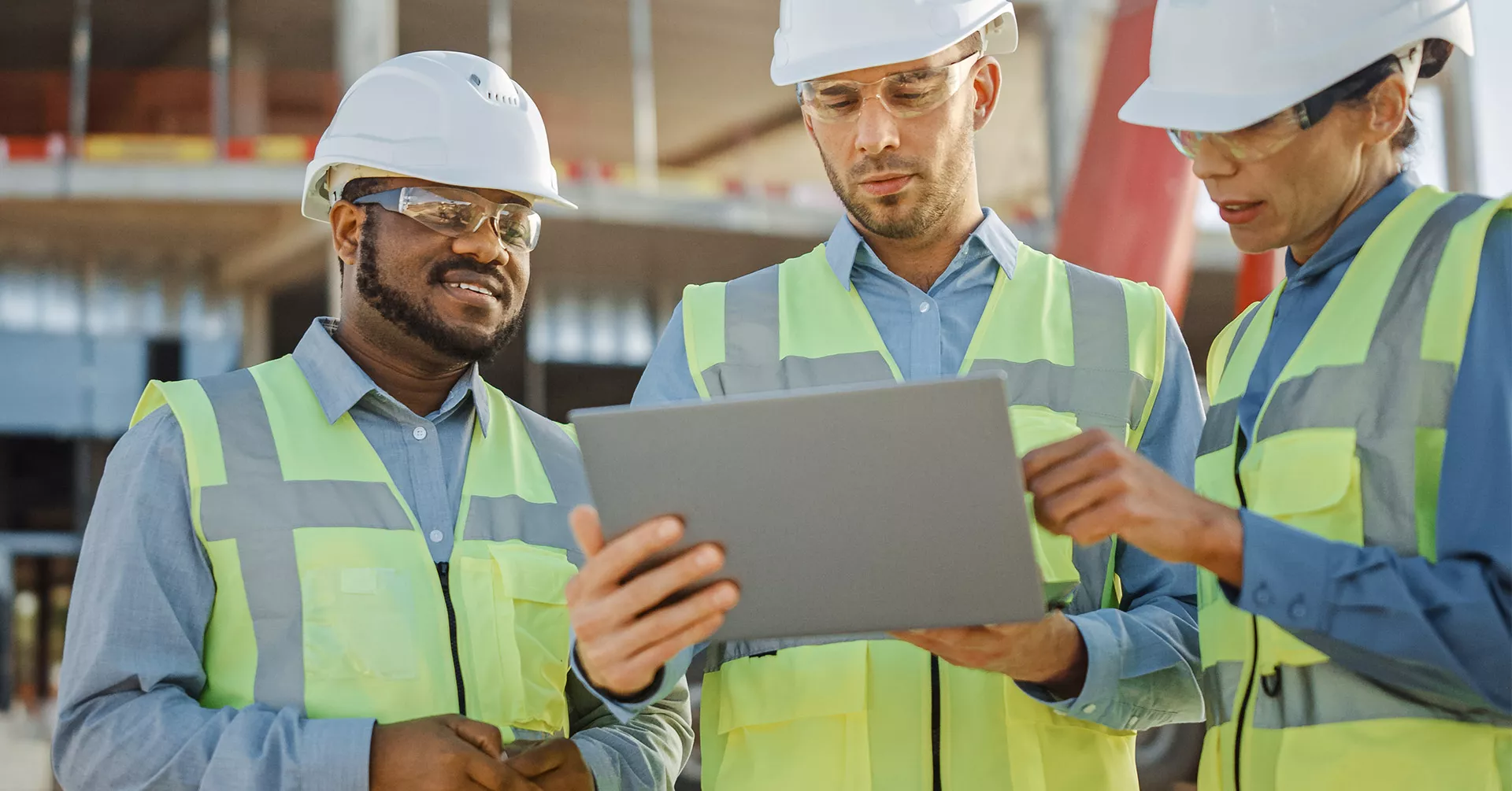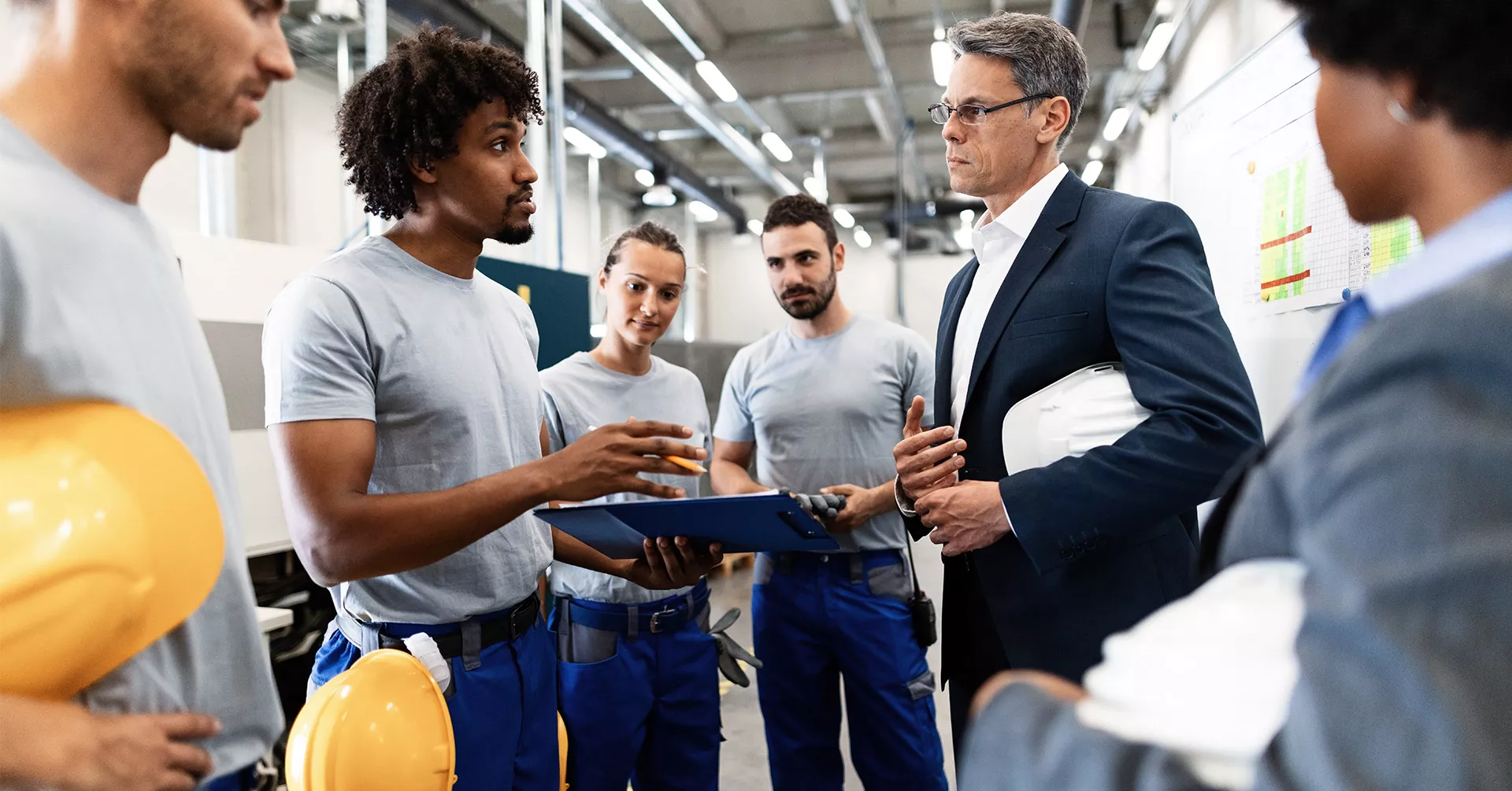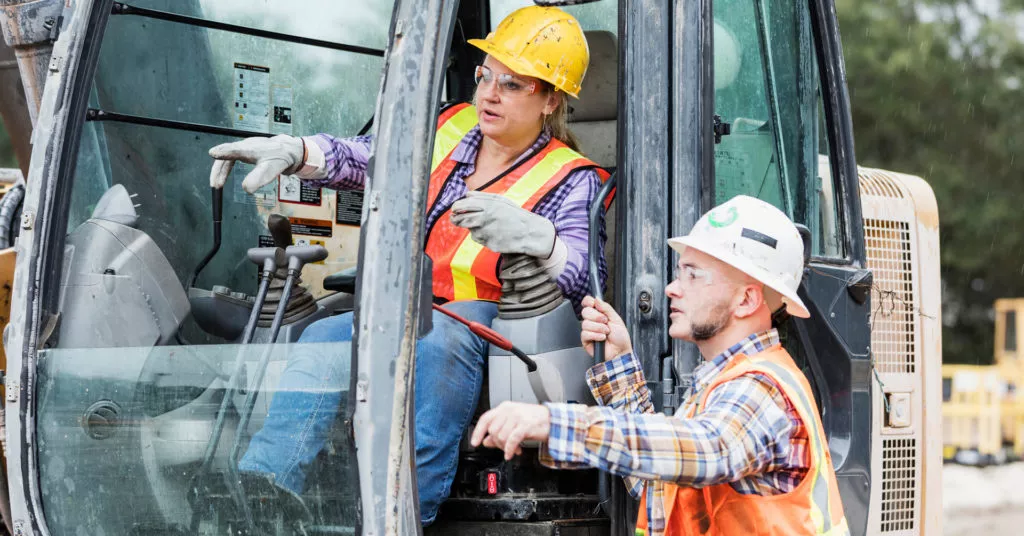
6 Construction Site Safety Tips to Protect Your Team
Construction sites can quickly shift from efficient work zones to disaster areas if they aren’t set up for safety. Here are some tips to keep your construction site safe and your workers protected.
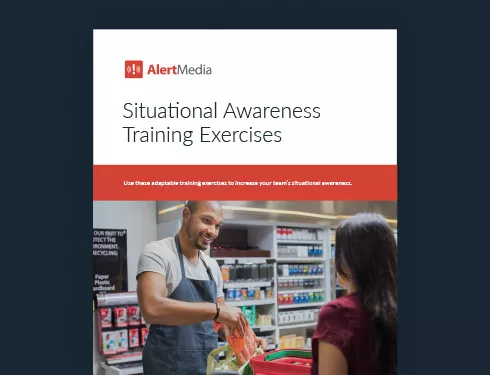
Most construction sites have all the markers of dangerous work environments: uneven working surfaces, fall risks from heights, heavy machinery, and even outdoor weather hazards like heat or ice. These dangers help to explain why roofing and construction rank in spots four and five on the list of most dangerous jobs. In fact, the U.S. Bureau of Labor Statistics (BLS) reports that around 19% of private industry worker fatalities in 2023 were in the construction industry. These employees face hazards every time they step onto the job site.
Understanding the risks to construction worker safety doesn’t have to mean writing off workplace injuries and accidents as “part of the job” or “what you signed up for.” In fact, greater risk awareness is an active step in mitigating those same accidents the industry is known for. Read on for other ways to increase security and promote health and safety at construction worksites.
How to Keep Workers Safe on All of Your Construction Sites
Worker safety should be the top priority for construction companies, above speed, expense, and effort. But putting safety first shouldn’t detract from your projects. On the contrary, construction work often runs smoother when the setting is safe and secure. Employees can operate more quickly with the right equipment and training and without the delays of halting work after an accident. Increased safety protocols can also reduce the overall cost of a job by lowering fines from the Occupational Safety and Health Administration (OSHA) standard violations, workers’ compensation, and insurance costs.
Keeping your construction site safe doesn’t have to be complicated, but it should be thorough. That’s where a safety culture comes into play. You can learn more about what a safety culture is and how to build one in your business here!
By integrating construction safety as a core value in your company, you ensure that no matter what work is being done and which employees are on shift, they are following safety procedures, and there will be fewer accidents and injuries. The following tips will support your company’s cultural progress, safety programs, and safety performance at the same time.
6 Construction Site Safety Tips
1. PPE
Provide appropriate personal protective equipment (PPE) to all your workers for any task or job that might pose a risk to health and safety. PPE can mean the difference between a near miss and a fatality, and it can even prevent an accident in the first place. OSHA requires that PPE be provided to employees at no cost and has specific standards for what should be available.
PPE items might include:
- Hard hats or head protection
- Harnesses for fall prevention
- High-visibility clothing
- Respirators and masks
- Steel-toed boots
- Safety goggles or glasses
- Gloves
- Hearing protection
- And more
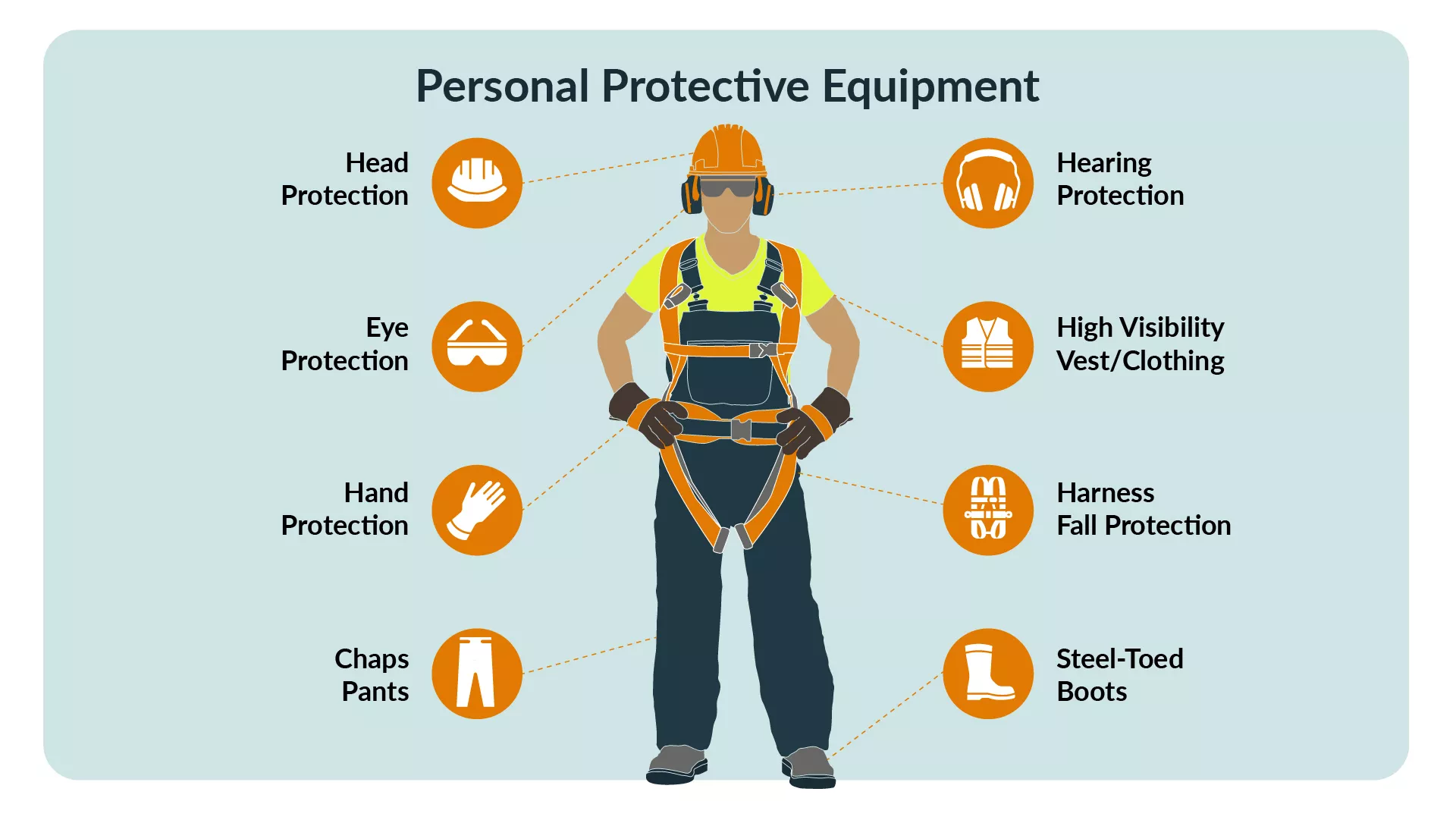
The basic need for PPE may go without saying, but how often are you updating your equipment lists? Job sites and industry best practices evolve, and staying up-to-date is essential. Have a regular schedule for revisiting the standard requirements, unique equipment needs for specific sites and occupations, and employee feedback to ensure people feel secure in the provided equipment.
Meanwhile, be sure to maintain the quality of the equipment and train all employees on proper use so that they can effectively protect themselves on the job.
2. Situational awareness
Teaching your employees to be situationally aware is one of the most impactful safety precautions you can take. When your employees are aware of what is going on around them, they can spot potential hazards and safety issues before they become accidents.
It starts with teaching your teams what to look out for and how they should respond. For example, an employee with good situational awareness trained in hazard identification might spot a broken guardrail that would fail under pressure—while an untrained employee may never see the accident coming. Focus on encouraging your workers to slow down and always pay attention to their surroundings. You can use situational awareness training exercises, which you can download for free, to help your training in this area.
Quick exercise: Reading the situation
Imagine you have a crew building a new-construction house. Some workers are on ladders putting the roof frame together, and others are running electrical through the walls. One electrician begins work directly underneath where a beam is being installed. They place a tool bag down a few feet from them in the walkway and focus on their work.
- What might happen if someone loses grip on a beam before it is secure?
- What might happen if the ladder is jostled?
- What might happen if someone carrying heavy lumber doesn’t see the tool bag in the walkway?
- How could situational awareness prevent an accident in this situation?
3. Safety training
Training programs are the best way to prepare your employees to navigate their working conditions safely. Prioritize training for specific job functions, electrical safety, ladder safety, power tools or other heavy equipment safety, first aid, and hazardous substance handling. On an ongoing basis, prepare your workers to respond to dangerous situations quickly and effectively. This applies to common incidents and potential threats that people don’t often think about. Train employees to carry out emergency plans, such as a fire evacuation, inclement weather, or other response to hazards that threaten your sites.
These courses should be mandatory for all employees and assigned regularly throughout the year, such as biannually or even quarterly for some courses. You can also use incentives to get employees positively engaged.
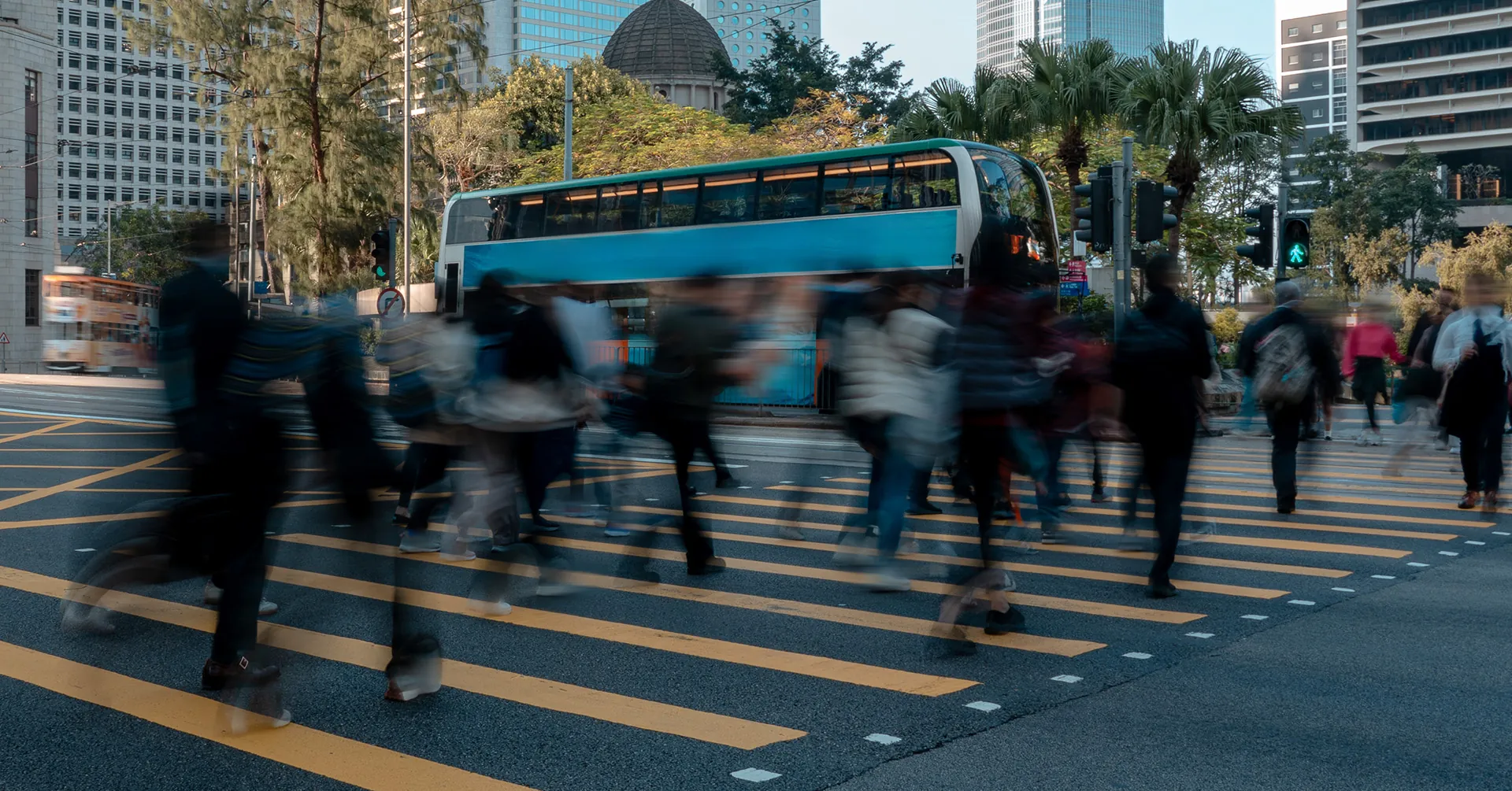
4. Communication
Strong communication is critical to safety in any job, but it’s especially important for navigating the many complexities involved with construction projects. Communication comes in many forms on these job sites. For example:
- Hazard communication — Clear signs to mark fall hazards, electrocution risks, or other potentially harmful situations and equipment
- Emergency communication — Contact with all relevant parties to facilitate evacuation or other emergency response on-site
- Regular communication — Day-to-day contact with all employees, stakeholders, and subcontractors to ensure work runs smoothly
Make sure you have up-to-date contact information for all your employees and relevant third parties, like vendors or contractors, so that you can reach out to them for any of these communication needs. You should also have a reliable way for your workers to reach you, such as a two-way mass notification system—after all, on a construction site, the workers are likely to encounter hazards first.
5. Strong leadership
A company’s safety culture starts at the top and is adopted down the ranks of the business. So, having a leadership team dedicated to safety is necessary for promoting workplace safety. But it’s not just about creating more safety rules for people to follow (though that can be helpful). Strong leadership is about setting an example and creating a positive environment where employees feel empowered to make safe choices.
Here are a few ways to strengthen your safety leadership:
- Avoid throwing around blame when an accident occurs, and instead, look for ways to learn and grow from these incidents
- Communicate any changes to procedures or expected hazards immediately and clearly to all employees
- Create an open and inviting space for employees to voice feedback, requests, and concerns
- Address safety issues immediately when they arise
6. Risk assessments
Keeping your job site safe starts with knowing what safety hazards are possible. You want to tailor your safety efforts to your specific risks rather than using generic safety plans that might not apply. For example, a construction crew working on demolishing old buildings will have a much higher risk for something like asbestos than a roofing crew on new construction, who should prioritize fall protection.
Run a risk assessment on your site, and be sure to factor in all the different work going on as well as environmental risks like inclement weather, extreme heat, or natural disasters. You can put this together on your own or use a threat assessment template like this to easily plug in information about your risks. Then you can build plans for how to mitigate the risks through safety measures and how your employees should respond to these threats.
An Organizational Commitment to Safety
Construction site safety is about more than just meeting OSHA standards or putting up caution tape. It’s about instilling commitment and accountability to safety in all workers, creating a truly safe place to work in an industry prone to accidents and fatalities.
As you approach making your construction management and work area safe, remember that arming your employees with knowledge, training, and protective equipment sets them up to succeed. When you back all of that up with support from leadership and encouragement to act in the safest manner, you will reap the benefits of speed, efficiency, and cost.

